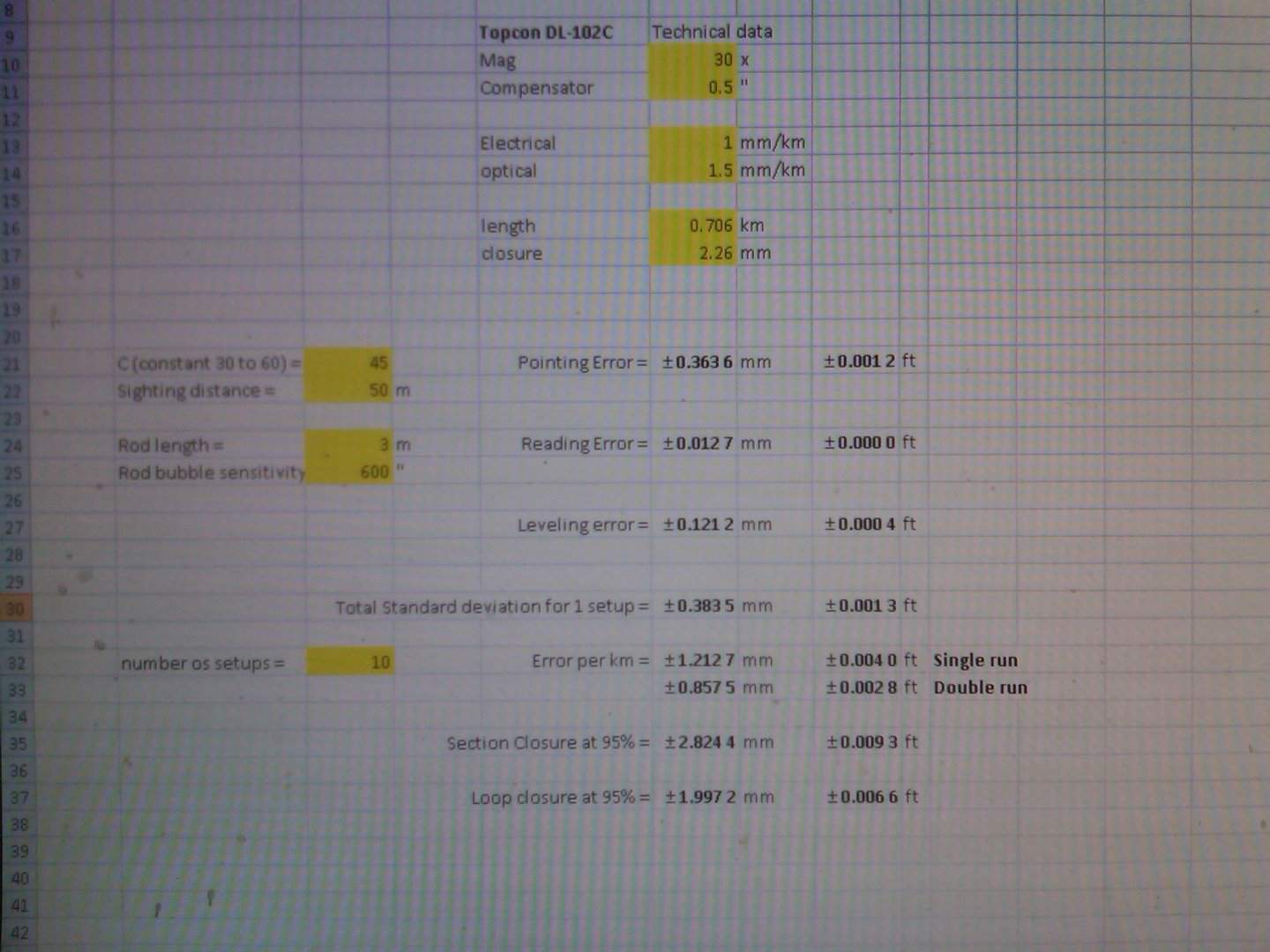makerofmaps, post: 351348, member: 9079 wrote: Turn on a plumb bob. Oh I forgot nobody carries those any more. Set your spike in the powerpole one foot below grade. That way the utility company doesn't see it and beat it out. And always reference a nail to it. (So you can check to see if it has been disturbed). So hopefully when you come back it will still be there. Don't paint you turns on the ties or rail road spikes, maintennance crews will think it is suppose to be replaced. After all my years of saftey courses now I can't believe how many miles of level runs I did along active tracks when I was younger.
Here's a good one. Long ago I was a party chief for the County running many miles of highway levels where we set ankle high spikes in power poles for BMs. There weren't any options, fertile farmland country. Used Ni2s with Philadelphia rods. And yes, we used rocks in the asphalt as turning points:-O. Anyway, each year we were forced to shepherd an engineering summer intern. We figured the least amount of damage he could do was to run the rod. After a quick training session (pick a good rock, don't forget which rock you used when the instrumentman is moving ahead, swing the rod, make sure it's fully extended and locked when required, these are where the benchmarks are, etc.), off we marched. He got the hang of it right away. A week later, Houston we have a problem. It turns out he was setting the rod on a handy rock next to the spike instead of the spike at the BMs! Discovered when a different crew reran a busted loop, good closure but the ending BM's elevation was tenths different. He was brokenhearted, "I was finding a good rock beside the spike at the BMs like you told me to!" Lesson learned: assume nothing. It wasn't the kid's fault; it was mine.
We were using different TPs out and back, though:bye:.
When you do a long level run, there is a reason for it, I can't think I ever did one unless I was doing it for control.
Which means you are setting bench marks for later use.
For highway control it's every 1500' or less, for sites it's usually points spread out around the site.
So there are many turn points on bench marks, it would not make sense to pass by them on the way in or out.
I can't imagine going from a USGS mark two miles to the next one with turtles and never setting anything between.
Mike Marks, post: 351358, member: 1108 wrote: It turns out he was setting the rod on a handy rock next to the spike instead of the spike at the BMs!
Been there. At the start of a level run across an ag field with a green assistant, I explained the basis concept of differential levels, showed him the equipment, then handed him a hammer and a large cold chisel to be used as a TP. Halfway through the run I realized he was hammering the chisel into the dirt but setting the rod on the ground for the TP. Start over...
Scott Zelenak, post: 351150, member: 327 wrote: To answer the OPs question, you gotta love a spreadsheet;
Ignoring procedures, equipment and a host of other error sources, the technical specs for your level instrument (only) compute out to the section and loop standard deviations shown above.
Scott,
Thank you for posting this spreadsheet. I'd like to examine the formulas used in the spreadsheet. Would you be willing to send me the file?
Al




